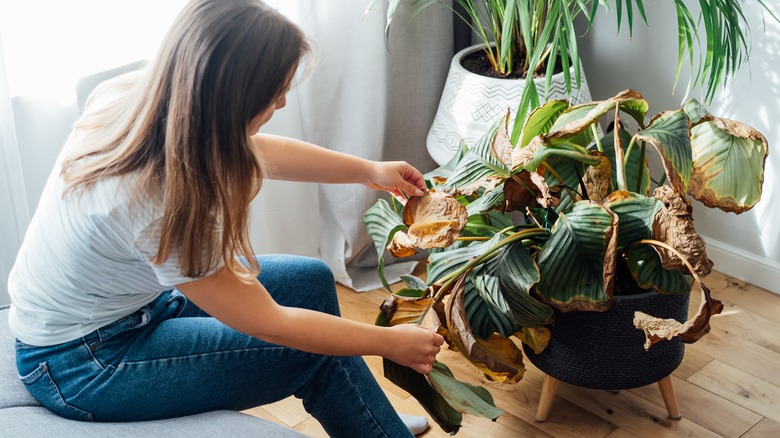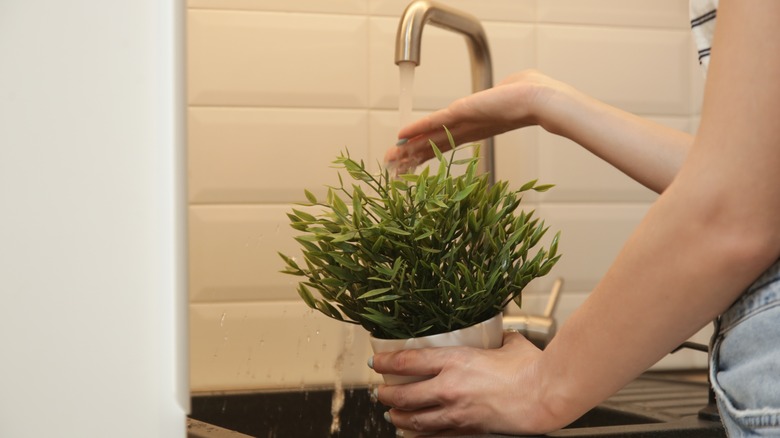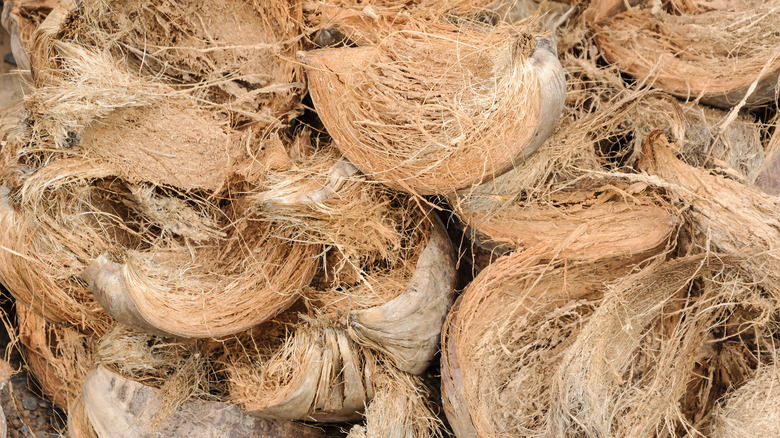Why Your Houseplant Isn't Absorbing Water And How To Fix It
We may receive a commission on purchases made from links.
Your new plant is in a well-drained pot, sitting in an area with its required amount of light, and you are watering and fertilizing it regularly. Despite all this seemingly appropriate attention, your green buddy is not flourishing. When your potted friend is looking under the weather for no apparent reason, its soil may be the culprit. The soil in potted plants may feel like it's holding enough water, but there may be other causes that keep your plant from benefiting from a good drink.
Give your plants a hefty shot of moisture with a few simple fixes that won't cost you much time or money. Potting soil mixes contain ingredients that help retain moisture. The trouble is that the soil may need some special treatment to do its job. You can whip up a batch of your own mix with this DIY potting soil recipe or follow some easy steps that can revive the soil that already houses your plants.
How to boost your plant's hydration
In less than an hour, you can send your suffering plant on its journey to recovery. Most commercial potting soils contain peat moss, including the soil in the pot from when you purchased the plant. This additive helps the soil mix retain moisture. However, if your plant is new to the soil mixture or if you forgot to give it a good drink for a while and the soil had dried out, peat moss has difficulty absorbing water with just a standard watering.
For plants in small or medium-sized pots, try this quick fix. Fill a tub or sink with lukewarm water and submerge the pot to just a bit below its rim. Once the soil appears to be evenly saturated, remove the pot from the water and let it drain in a sink. For larger pots, you can use a surfactant like this one from Amazon to act as a wetting agent before giving it a thorough soaking. These compounds promote water penetration when it's not possible to soak them in another container.
Salt buildup in potted plants is another possible cause of your plant's dehydrated state. A process called "leaching" can take care of unwanted minerals. First, remove any salt deposits from the topsoil. Then, place your potted plant in a sink and water fully. Once the soil has absorbed the water, water the plant again. Let the excess water drain from the pot. Leaching your plants every four to six months can keep harmful deposits from developing.
Set your soil up for future success
Keeping an eye on the state of your plants' soil is a wise practice, and you should change your indoor plants' soil from time to time. Most commercial potting soil mixes rely heavily on peat moss, but Oregon State University reports that removing peat moss from its natural home contributes to climate change. Peat moss is a powerful carbon sink, and harvesting this plant not only releases problematic amounts of carbon dioxide into the atmosphere, it also threatens wildlife habitats. Peat moss beds take many years to develop and often are found in areas that nurture sensitive animal and plant populations.
You can be an eco-champion by using coconut coir instead of peat moss. This byproduct of commercial coconut farming helps the soil retain water, absorbs water better than peat moss, serves as a sustainable peat moss replacement, and creates a market for waste from the coconut harvest that would otherwise go unused. The two products are similarly priced, so why not opt for the environmentally friendly choice?



